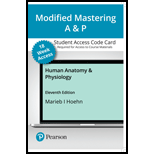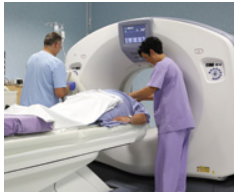
44-Year-Old Male with Skull Fracture
William Hancock, 44, fell from the scaffolding at a construction site. When emergency personnel arrived, they found him unconscious but with stable vital signs. As paramedics placed him on a backboard to stabilize his head, neck, and back, they noted watery blood leaking from his right ear. In the hospital, Mr. Hancock regained consciousness and was treated for deep lacerations on his scalp and face. Head CT scans revealed both longitudinal and transverse fractures of the right petrous temporal and sphenoid bones that extended through the foramen rotundum and foramen ovale.

The following observations were recorded on Mr. Hancock’s chart on admission:
•Complete loss of hearing in the right ear.
•Paresthesia (sensation of “pins and needles’) at the right corner of the mouth, extending to the lower lip and chin.
•Numbness of the right upper lip, lower eyelid, and cheek.
•Right eye turned slightly inward when looking straight ahead. Diplopia (double vision), particularly when looking to the right.
Mr. Hancock was given a course of antibiotics, the head of his bed was elevated by 30°. and he was placed under close observation. After 24 hours, doctors noted that the right side of Mr. Hancock’s face showed signs of drooping, with incomplete eye closure and asymmetric facial expressions.Mr. Hancock’s right eye showed minimal tear production. The weakness and asymmetry on the right side of his face began to subside after a few days, and the leak of fluid from his ear stopped, but he continued to complain of paresthesia, diplopia, and an inability to hear with his right ear.
3. Why would Mr. Hancock’s doctors give him antibiotics based on these observations? Why was the head of his bed elevated?
Want to see the full answer?
Check out a sample textbook solution
Chapter 13 Solutions
HUMAN ANATOMY + PHYSIOLOGY + MAST AP
- Not part of a graded assignment, from a past midtermarrow_forwardNoggin mutation: The mouse, one of the phenotypic consequences of Noggin mutationis mispatterning of the spinal cord, in the posterior region of the mouse embryo, suchthat in the hindlimb region the more ventral fates are lost, and the dorsal Pax3 domain isexpanded. (this experiment is not in the lectures).a. Hypothesis for why: What would be your hypothesis for why the ventral fatesare lost and dorsal fates expanded? Include in your answer the words notochord,BMP, SHH and either (or both of) surface ectoderm or lateral plate mesodermarrow_forwardNot part of a graded assignment, from a past midtermarrow_forward
- Explain in a flowcharts organazing the words down below: genetics Chromosomes Inheritance DNA & Genes Mutations Proteinsarrow_forwardplease helparrow_forwardWhat does the heavy dark line along collecting duct tell us about water reabsorption in this individual at this time? What does the heavy dark line along collecting duct tell us about ADH secretion in this individual at this time?arrow_forward
- Surgical Tech For Surgical Tech Pos CareHealth & NutritionISBN:9781337648868Author:AssociationPublisher:CengageUnderstanding Health Insurance: A Guide to Billin...Health & NutritionISBN:9781337679480Author:GREENPublisher:Cengage
 Fundamentals of Sectional Anatomy: An Imaging App...BiologyISBN:9781133960867Author:Denise L. LazoPublisher:Cengage Learning
Fundamentals of Sectional Anatomy: An Imaging App...BiologyISBN:9781133960867Author:Denise L. LazoPublisher:Cengage Learning  Medical Terminology for Health Professions, Spira...Health & NutritionISBN:9781305634350Author:Ann Ehrlich, Carol L. Schroeder, Laura Ehrlich, Katrina A. SchroederPublisher:Cengage Learning
Medical Terminology for Health Professions, Spira...Health & NutritionISBN:9781305634350Author:Ann Ehrlich, Carol L. Schroeder, Laura Ehrlich, Katrina A. SchroederPublisher:Cengage Learning





